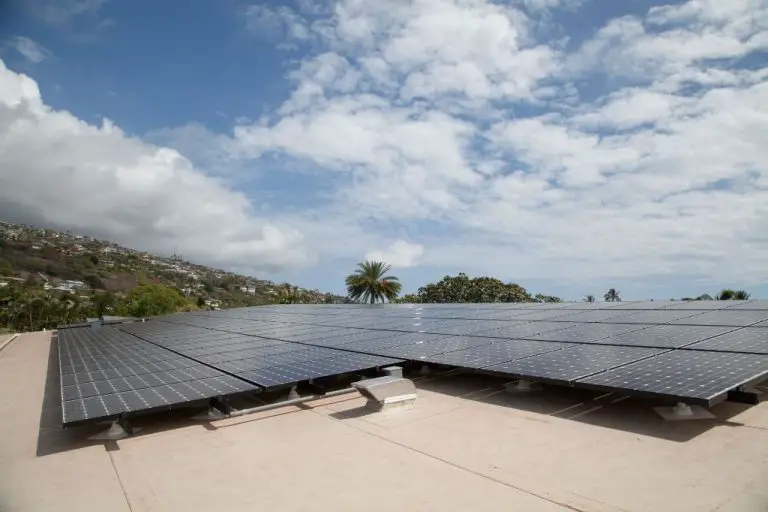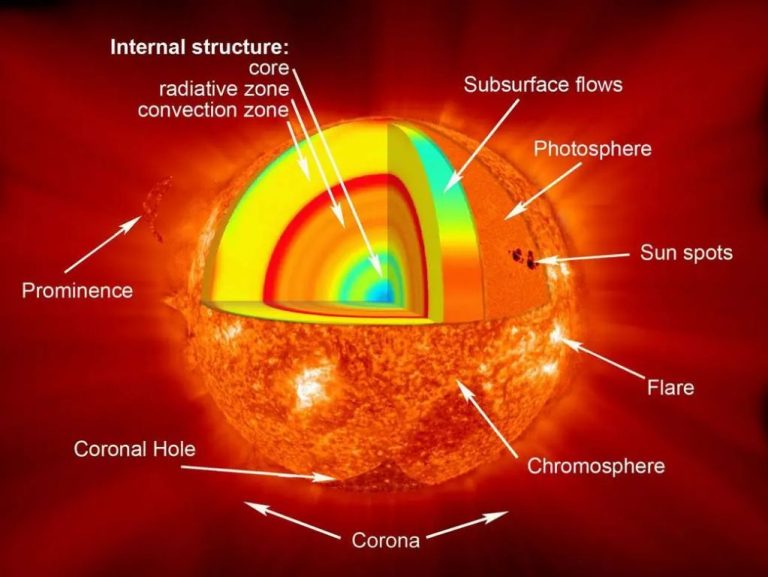Is Solar Energy Very Powerful?

With rising energy costs and growing climate concerns, solar energy has emerged as a promising renewable energy source. The amount of solar energy that hits the Earth’s surface every hour is greater than the amount of energy used by the entire world in a year (1). Yet solar currently accounts for just 3% of US electricity generation (2). This begs the question – is solar energy truly powerful enough to meet our energy needs?
In this article, we will analyze the current use and future potential of solar energy. We will weigh the advantages and limitations of solar technology. By evaluating the economics, storage solutions, and environmental benefits, we will determine if solar energy is ready to transition from a niche source to a major player in global energy markets.
Current Use of Solar Energy
Solar energy is seeing rapid growth in adoption globally. According to the International Energy Agency (IEA), the total global installed solar photovoltaic capacity reached 821 GW by the end of 2021, representing 3% of global electricity generation capacity.[1] The leading country for solar power is China, with about 390 GW of installed solar capacity as of 2022, accounting for nearly two-fifths of total global solar capacity.[2]
Other top countries utilizing solar power include the United States, Japan, Germany, India, Italy, Australia, Spain, and South Korea. The countries with the highest percentage of solar energy as a share of total energy production include Australia, Spain, Greece, Honduras, Germany, Italy, Japan, and Chile.[3]
Solar power adoption has grown at an average annual rate of over 40% since 2000.[1] This rapid growth is expected to continue, with projections that solar power could generate up to 16% of global electricity by 2050.[1] Key drivers enabling this growth include declining costs, supportive government policies, and the need for clean energy sources to combat climate change.
Potential of Solar Energy
The potential for solar energy is enormous compared to global energy demand. According to the International Energy Agency (IEA), the total global technical potential for solar PV energy is estimated to be over 400,000 TWh per year, far exceeding the roughly 26,000 TWh of total global electricity production in 2021 https://www.iea.org/energy-system/renewables/solar-pv. Even when accounting for realistic constraints like land availability and conversion efficiency, studies show solar energy potential can greatly exceed total global energy demand.
One analysis by the US Department of Energy found that covering just 0.6% of land globally with solar PV systems could supply over 18 times total global energy consumption. And solar potential rises dramatically when considering unlocking the vast solar resource on buildings, vehicles, structures, and more through advances like building-integrated PV and vehicle-integrated PV https://www.ecowatch.com/solar-energy-statistics. Solar efficiency has also been rising steadily, further boosting solar’s potential. The Department of Energy estimates solar PV efficiency has improved by about 1% per year on average.
In summary, solar energy potential far exceeds present global demand thanks to the enormous solar resource available and continuing improvements in capturing that energy efficiently. With less than 1% of global land area, solar PV alone could supply many times the world’s energy needs.
Advantages of Solar
Solar energy has several key advantages that make it an attractive renewable energy source. First, it is renewable – the sun’s energy is virtually limitless and will continue shining for billions of years (1). This means solar can generate electricity without depleting finite resources like fossil fuels.
By switching to solar power, we can reduce dependence on fossil fuels like coal, natural gas, and oil. In 2018, solar energy accounted for only 2.2% of US electricity generation, but has huge potential for growth (2). More solar would allow us to tap into free sunshine instead of planet-warming sources like coal and natural gas.
Solar panels produce no emissions when generating electricity. In contrast, fossil fuels release pollutants like nitrogen oxides, sulfur dioxide, particulate matter, and heavy metals. They are also a major source of greenhouse gasses contributing to climate change. Solar helps avoid these impacts.
While solar was once very expensive, costs have decreased dramatically in recent years. The average cost to install residential solar declined by over 30% from 2015 to 2019 as technology improved (3). With continued innovation and economies of scale, solar’s affordability will likely keep increasing.
Sources:
(1) https://www.energy.gov/eere/solar/articles/how-much-power-does-sun-produce
(2) https://www.eia.gov/tools/faqs/faq.php?id=427&t=3
(3) https://www.seia.org/initiatives/whats-megawatt/utility-scale-solar-power
Disadvantages of Solar Energy
While solar energy has many benefits, there are some challenges and drawbacks to consider:
Intermittency: Solar energy production depends on the amount of sunlight, which varies by season, weather, and time of day. Solar output is lower or nonexistent at night and on cloudy days.
Storage Difficulties: The intermittent nature of solar makes energy storage an issue. Storing excess solar energy for use when the sun isn’t shining adds costs and complexities.
Large Land Area: Collecting solar energy often requires large land areas with direct sun exposure. Rooftop solar on homes and buildings helps utilize existing space, but large solar farms require substantial open land.
High Upfront Costs: The initial investment for purchasing and installing solar panels and related equipment is quite high. But solar can pay for itself over time with energy savings.
Citations:
https://www.constellation.com/energy-101/energy-innovation/solar-energy-pros-and-cons.html
https://www.nachi.org/disadvantages-solar-energy.htm
Solar Energy Storage
Energy storage is essential for enabling continuous energy supply from solar power, especially during nighttime or cloudy days. The most common storage methods paired with solar power systems include batteries, thermal storage, and pumped hydro storage.
Batteries like lithium-ion and lead-acid are frequently used to store solar energy for residential uses. They allow solar energy captured during the day to be used at night. Battery costs have fallen in recent years, making them more affordable. However, they can still be expensive for large-scale storage. Batteries also degrade over frequent charge-discharge cycles.
Thermal storage like molten salt allows heat from solar thermal plants to be stored for hours and used when needed. This provides continuous operation even when the sun isn’t shining. However, thermal storage is limited to solar thermal plants.
Pumped hydro storage uses excess solar power to pump water uphill into a reservoir, then lets it flow downhill through turbines to generate electricity later. It provides large-scale, long-duration storage. But suitable geography is needed, and it has high capital costs.
Ongoing research aims to improve storage technologies and reduce costs. This includes advanced batteries, compressed air storage, hydrogen storage, and more. Affordable, large-scale storage remains a key challenge for enabling widespread solar power.
Solar Energy Economics
The economics of solar energy have changed drastically in recent years, with costs dropping dramatically. According to the International Energy Agency (IEA), new utility-scale solar projects now cost just $20-40 per MWh in some markets, making solar “the cheapest source of electricity in history.”
Compared to other energy sources, the levelized cost of electricity from solar PV is now cheaper than fossil fuels in many locations. This is enabled by government subsidies and favorable policies like tax credits, renewable portfolio standards, and net metering. As costs have fallen, solar has reached grid parity in places with good sun resources and high electricity prices.
The key drivers bringing down the price of solar have been technological advances, economies of scale in manufacturing, and improvements in financing and business models. Analysts expect solar’s costs to continue falling in the future, making it increasingly competitive with conventional power generation.
Environmental Impact
Solar energy is often promoted as a clean, renewable energy source with minimal environmental impact. However, like all energy technologies, solar does have some negative effects that should be considered.
In terms of life cycle emissions, solar panels generate significantly fewer greenhouse gas emissions over their lifespan compared to fossil fuel sources like coal or natural gas. According to the IPCC, solar emits 41-48 grams of CO2 per kWh versus 820 for gas and 820-910 for coal power plants [1]. Solar photovoltaics require energy to mine raw materials and manufacture panels, but they offset this during operation.
Solar farms do require significant land area, which can challenge land use. The US Department of Energy estimates utility-scale solar needs 5-10 acres per megawatt capacity. Proper siting is important to avoid conflicts over land usage [2].
There are toxicity risks from materials like cadmium and lead used in some solar panels. Proper handling, use, and recycling is important to minimize dangers. New solar panel designs are reducing dependence on toxic compounds [3].
Future Potential
The future looks bright for solar energy. According to the Solar Energy Industries Association (SEIA), in 2021 the US solar market installed 23.9 gigawatts of photovoltaic capacity, representing a 46% annual growth rate. With price declines and performance improvements, solar is projected to expand to 20% of US electricity generation by 2030.[1]
New technologies are also emerging that could greatly increase solar potential. Companies are developing solar windows that can generate electricity from transparent glass. Researchers are working on improving solar cell efficiency beyond traditional limits. Perovskite solar cells already achieve efficiencies over 25% and can be printed cheaply, offering a promising low-cost alternative.[2]
With continued innovation, solar power’s share of global energy production is expected to grow substantially in the coming decades. Solar offers a clean, renewable way to meet rising energy demands around the world.
[1] https://www.seia.org/solar-industry-research-data
[2] https://energy.mit.edu/research/future-solar-energy/
Conclusion
In summary, solar energy has significant potential as a powerful renewable energy source, but still faces some limitations. The main advantages of solar are that it is abundant, renewable, clean, and becoming more affordable and efficient. The amount of solar energy that reaches the Earth’s surface on a daily basis far exceeds our current global energy needs. Solar photovoltaic technology has improved dramatically over the past decades, with solar panel costs dropping by over 90% since 2009. With further advancements, solar could feasibly meet a substantial portion of the world’s electricity demand within the next couple of decades.
However, solar does have some disadvantages that constrain the pace and scale of adoption. The intermittent nature of solar energy creates the need for storage solutions to provide power when the sun is not shining. Solar panel efficiency also needs to improve further. While costs have declined, solar power generally remains more expensive than conventional power generation sources like coal and natural gas without government subsidies. More research, development and infrastructure investment is required for solar to reach its full potential.
Overall, solar energy technology has progressed impressively and has tremendous room for growth. But while exceptionally powerful in theory, in practice it still accounts for only around 2% of global electricity generation. Realizing the full potential will require overcoming ongoing challenges around efficiency, storage, and costs. With sufficient innovation and adoption, solar could eventually emerge as one of the world’s leading energy sources.






